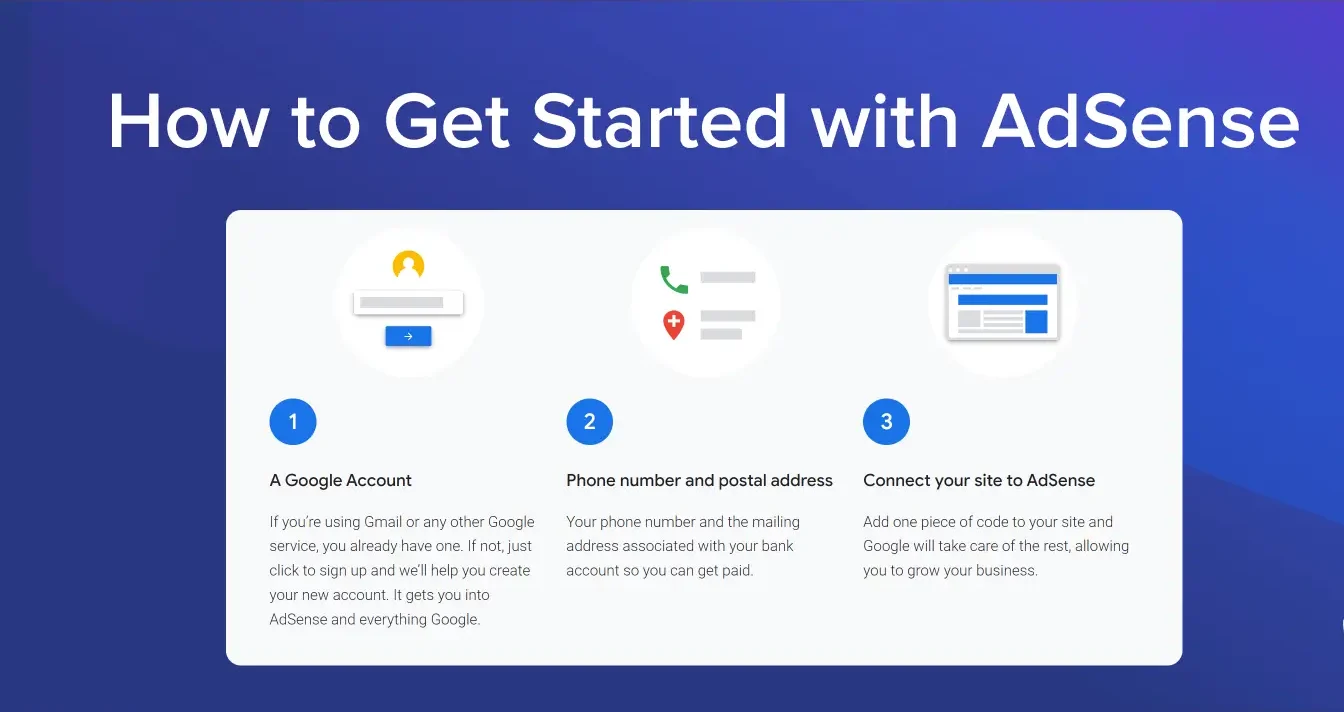In today’s digital age, monetizing online content has become a vital goal for bloggers, website owners, and content creators alike. One of the most popular and accessible ways to generate income online is through Google AdSense. Whether you run a blog, a news website, or a YouTube channel, Google AdSense offers a simple yet powerful platform to turn your digital traffic into real revenue.
This article provides a comprehensive overview of what Google AdSense is, how it works, the key factors that influence your monthly income, and expert strategies to build a steady and sustainable revenue stream from your online presence.
What is Google AdSense?
Google AdSense is an advertising program run by Google that allows publishers—owners of websites, blogs, or YouTube channels—to display ads on their content. These ads are provided by Google’s advertising network, which includes millions of advertisers bidding to reach relevant audiences.
How it Works:
- Advertisers create ads and pay Google to display them across the web.
- Publishers sign up for Google AdSense and embed ad codes on their platforms.
- Google’s system then automatically serves ads tailored to the website’s content and visitors’ interests.
- Publishers earn money when visitors view or click on these ads.
AdSense is especially popular because it requires no upfront investment, no direct relationships with advertisers, and minimal technical setup. Google manages the entire auction and ad delivery process, letting publishers focus on content creation.
Types of Ads in Google AdSense
Google AdSense offers multiple ad formats to help publishers optimize revenue:
- Text Ads: Simple ads composed of headlines, descriptions, and URLs.
- Display Ads: Visual banners in various sizes.
- Rich Media Ads: Interactive ads with animations or videos.
- In-Feed Ads: Native ads that blend within website content feeds.
- In-Article Ads: Ads inserted between paragraphs of articles.
- Matched Content: Recommended content units that promote your own articles and ads.
Responsive ad units automatically adjust their size to fit the visitor’s device screen, improving visibility and engagement.
How Do Publishers Earn Money Through Google AdSense?
Earnings through AdSense come primarily from two models:
- CPC (Cost Per Click): You earn money when a visitor clicks on an ad.
- CPM (Cost Per Mille): You earn money based on ad impressions (per 1,000 views).
The amount earned per click or impression depends on:
- The advertiser’s bid (how much they pay to reach your audience).
- The quality and relevance of your website content.
- The geography of your visitors.
- The type and placement of ads on your site.
Google keeps a portion of the ad revenue as its fee and pays the rest to the publisher.
Factors Affecting Your Monthly AdSense Income
Your monthly income from Google AdSense is influenced by several interrelated factors. Understanding these is crucial to developing an effective monetization strategy.
1. Website Niche or Content Category
Certain topics attract higher advertiser bids because the audience is more valuable to advertisers. For example:
- High-paying niches: Finance, insurance, legal, health, technology, and real estate tend to have higher CPC rates.
- Low-paying niches: Entertainment, general lifestyle, and personal blogs often have lower CPC rates.
Selecting a profitable niche or focusing your content strategy on lucrative topics can significantly improve your earnings.
2. Website Traffic Volume and Quality
More visitors generally mean more ad impressions and clicks, which can increase your revenue. However, the quality of traffic matters:
- Organic traffic from search engines usually performs better than paid or social media traffic.
- Visitors who spend more time on your site or interact more deeply tend to generate higher ad engagement.
- Bots or invalid traffic can lead to penalties or account suspension.
Focusing on attracting targeted, engaged audiences ensures better ad performance.
3. Visitor Geography (Location)
Advertisers pay different rates based on the visitor’s location. Traffic from developed countries usually commands higher CPC rates because advertisers are willing to spend more to reach those markets.
- High CPC countries: United States, Canada, United Kingdom, Australia, Germany.
- Lower CPC countries: Many developing nations have lower ad rates.
This means if most of your visitors come from high-value countries, your AdSense income will be significantly higher.
4. Ad Formats and Placement
Where and how you place ads affects click-through rates (CTR):
- Ads placed above the fold (visible without scrolling) perform better.
- Integrating native ads that blend with content increases user engagement.
- Larger ad sizes like 300×250 or 336×280 often perform better.
- Overloading your site with ads can frustrate users and reduce revenue.
Testing different ad formats and placements to find the best balance is vital.
5. Website Design and User Experience
A clean, fast-loading website with easy navigation encourages visitors to stay longer and interact with content and ads more. Slow or cluttered sites drive users away, reducing ad impressions and clicks.
6. Seasonal and Market Trends
Advertiser budgets vary throughout the year. For example, Q4 holiday seasons often see higher ad spending, boosting CPC and CPM rates.
How Much Can You Earn With Google AdSense?
Earnings vary widely depending on all the factors mentioned above. Here are some illustrative benchmarks:
| Monthly Visitors | Estimated Earnings Range (USD) |
| 1,000 | $1 – $20 |
| 10,000 | $50 – $500 |
| 50,000 | $300 – $3,000 |
| 100,000 | $700 – $7,000+ |
Note: These figures depend heavily on niche, visitor location, and ad optimization. A finance blog with 50,000 US visitors will earn more than a general blog with the same traffic from a low-CPC region.
Expert Advice to Build a Steady Monthly Income From AdSense
Generating a consistent monthly income from Google AdSense is a long-term effort that requires a combination of content strategy, traffic growth, and ad optimization.
1. Focus on Quality Content Creation
High-quality, original, and helpful content attracts more visitors and encourages longer engagement.
- Use keyword research tools to identify topics with demand and low competition.
- Write detailed guides, how-to articles, and authoritative posts that establish your site as a trusted source.
- Update content regularly to keep it fresh.
2. Optimize for Search Engines (SEO)
Organic search traffic is often the most valuable:
- Improve on-page SEO: Use relevant keywords, optimize titles, meta descriptions, and headings.
- Build backlinks to increase domain authority.
- Improve site speed and mobile responsiveness.
- Use structured data to enhance search result appearance.
3. Drive Quality Traffic From High-Value Geographies
- Create content that appeals to audiences in high CPC countries.
- Use social media marketing and targeted ads (carefully) to attract relevant visitors.
- Consider localization strategies if your niche is global.
4. Experiment With Ad Placement and Formats
- Test different ad sizes and positions (sidebar, within content, header, footer).
- Use heatmaps and Google Analytics to understand visitor behavior.
- Avoid intrusive ads that hurt user experience.
5. Monitor Performance and Use Data Analytics
- Regularly review AdSense reports for CTR, RPM (revenue per thousand impressions), and top-performing pages.
- Use Google Analytics to understand user behavior and traffic sources.
- Adjust strategies based on data insights.
6. Diversify Your Income Streams
Relying solely on AdSense can be risky due to fluctuating ad rates and policies. Supplement income with:
- Affiliate marketing partnerships.
- Sponsored content or product reviews.
- Selling digital products or courses.
- Offering premium content or memberships.
Case Study: From Zero to $3,000 Monthly
Consider TechMastery, a technology blog started by an individual with a passion for software tutorials. The site had no traffic initially but focused on:
- Writing in-depth tutorials targeting high CPC keywords like “best VPN for privacy” and “cloud computing benefits.”
- Applying strong SEO tactics to rank on Google.
- Using responsive display ads and in-article ads optimized for both desktop and mobile.
- Attracting mostly US and European visitors.
Within 18 months, TechMastery grew to 50,000 monthly visitors and earned roughly $3,000 per month from AdSense. The site also added affiliate marketing links, increasing total monthly revenue to $5,000.
Common Mistakes to Avoid With Google AdSense
- Violating Policies: Avoid clicking your own ads, encouraging clicks, or using invalid traffic sources, or your account may be suspended.
- Overloading Ads: Too many ads reduce user experience and can lower your search rankings.
- Ignoring Mobile Users: Not optimizing for mobile devices leads to lost revenue.
- Not Tracking Analytics: Without monitoring, you can’t improve your earnings.
Conclusion
Google AdSense remains a leading choice for online monetization, enabling content creators to earn passive income by displaying ads. However, earning a stable monthly income requires careful attention to your niche, traffic quality, ad optimization, and continuous improvement.
By focusing on valuable content, attracting engaged and geographically valuable audiences, optimizing ad formats and placement, and diversifying your income streams, you can build a sustainable and growing revenue from AdSense over time.
With patience, persistence, and data-driven strategies, Google AdSense can transform your website or channel into a profitable online business.










